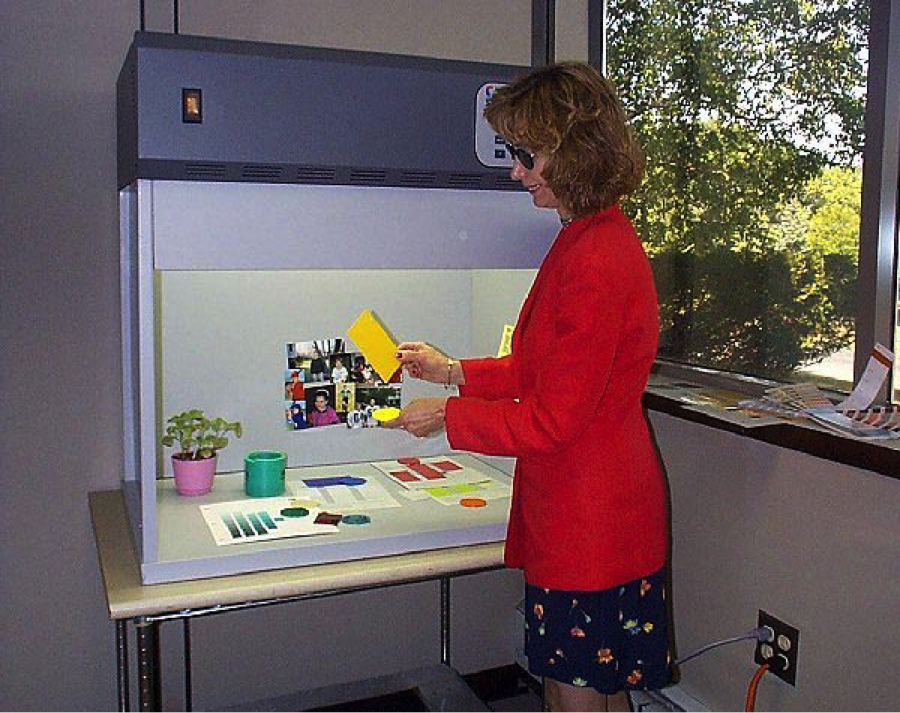Si trabajas en una industria donde la precisión del color es importante, sabes que la iluminación juega un papel enorme en cómo percibes los colores.
Una cabina de luz es una parte crucial de cualquier programa de evaluación visual. Puede ayudarte a verificar si el color de tu producto es aceptable y asegurar que se mantenga preciso en todas las condiciones de iluminación después de la compra. Cuando las piezas se fabrican en diferentes fábricas, también se debe usar una cabina de luz para asegurarse de que continúen coincidiendo bajo cualquier condición de iluminación una vez ensambladas.

Esta imagen muestra cómo se ven los colores diferentes bajo cuatro condiciones de iluminación diferentes: D65, D50, Store and Home.
Dependiendo de tu industria, las cabinas de luz están pintadas en Munsell N7 o N8 – ambos colores neutros que permiten que tus ojos se enfoquen sin distracciones. Sin embargo, solo usar una cabina de luz no es suficiente. Aquí hay algunas cosas que necesitas tener en cuenta para un programa de evaluación visual preciso.
- Usar ropa brillante o mantener objetos innecesarios en tu cabina de luz causará "ruido de fondo" para tus ojos. Esto no solo puede distraer tu visión, sino que realmente puede causar que tu percepción del color que estás evaluando cambie.
- Colocar tu cabina de luz demasiado cerca de una ventana o en una sala bien iluminada introducirá otros tipos de luz en tu evaluación. Debes mantener tu cabina de luz en una sala oscura, sin otras fuentes de luz.
- Cuando buscas la más mínima variación, las lentes tintadas pueden sesgar el color que ves. Incluso una ligera tonalidad amarilla en las lentes de tus gafas o un color azul claro en tus lentes de contacto puede afectar la percepción del color. Piensa en nuestras mezclas básicas de colores... amarillo + azul = verde.
- Dejar demasiado espacio entre las muestras no te permitirá evaluar con precisión la diferencia de color. Las muestras deben estar tocándose para determinar la variación del color.

Evaluando visualmente el color de dos muestras de tejido marrón en la cabina de luz SpectraLight QC.
- Mirar una muestra durante demasiado tiempo hará que tus ojos se fatiguen y comiencen a enviar información de color incorrecta a tu cerebro. Idealmente, solo debes mirar una muestra por unos segundos, luego cerrar los ojos y dejarlos descansar antes de mirar de nuevo.
¿Quieres saber más? Consulta La Ciencia Detrás de la Evaluación Visual para una explicación más técnica sobre cómo hacer que tu programa de evaluación visual sea lo mejor posible.

